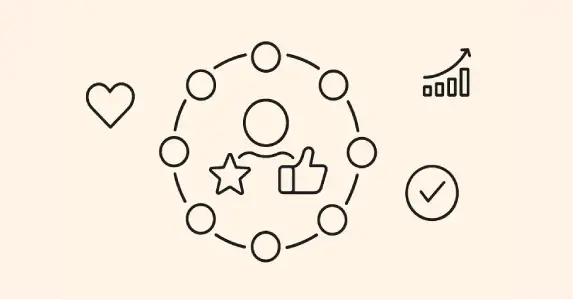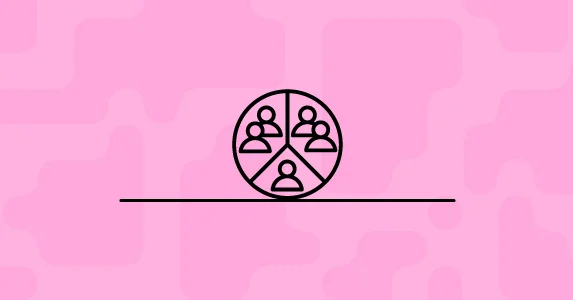As ecommerce marketers, we’ve all faced that one haunting question after a campaign goes live: “Who exactly were we talking to?” Because when campaigns underperform, it’s rarely about creative quality or timing—it’s usually about misaligned audience targeting.
Most ecommerce brands still rely on basic demographics, generic cohorts, or superficial behavioral triggers to build their audiences. But today’s customers don’t shop in broad categories—they navigate with intent, emotion, and context. To truly move the needle on conversions, you need a segmentation strategy that adapts to your customer’s reality—not the other way around.
That’s where smarter segmentation enters the picture.
1. Affinity-Based Targeting: Start With What Shoppers Already Love
One of the biggest missed opportunities in ecommerce is not using what customers have already told you through their behavior.
They’ve browsed, wishlisted, and added to the cart—these are all affinity signals. Segment Agent lets you group users not just by what they buy, but by:
- Brand users gravitate towards
- Categories users explore repeatedly
- Discount levels users respond to
- Price points users are comfortable with
Say you’re running a campaign for high-end sneakers. Instead of blasting your full list, you can target only customers with a demonstrated preference for premium brands and low price sensitivity. Suddenly, your ROI doesn’t just increase—it compounds.
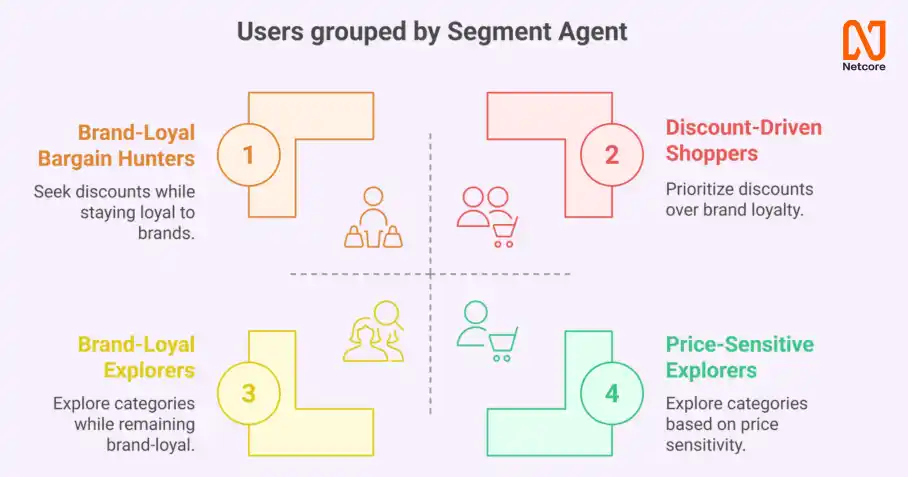
2. Propensity-Based Targeting: Market to Customers Based on What They’re Likely to Do
Ever felt like you’re spending 80% of your budget on people who were never going to convert anyway?
Propensity models change that. Segment Agent uses AI to predict how likely someone is to take a specific action—whether it’s purchasing, repurchasing, churning, or uninstalling your app.
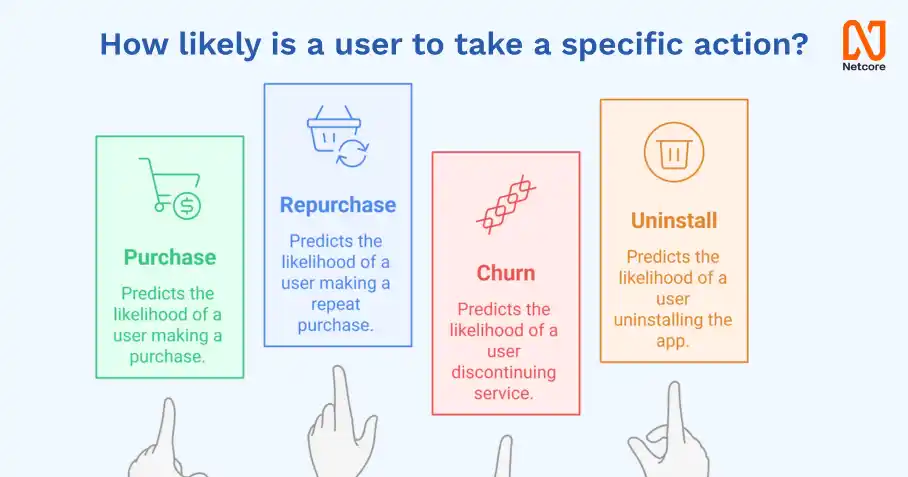
With that insight, you can:
- Send recovery campaigns only to those likely to churn
- Trigger cart nudges for users likely to purchase in 7 days
- Run loyalty pushes for high LTV repeat buyers
This isn’t about more data—it’s about knowing where to act, when, and on whom. It’s precision at scale, with zero guesswork.
3. Objective-Driven Micro-Segmentation: Build Segments That Align With Your Goals
Most marketers build audiences based on what they can segment—not necessarily what they should.
But what if you could create segments directly aligned to your business goals?
Whether your objective is:
- Driving repurchase in a specific category
- Promoting low-selling SKUs
- Re-activating dormant users
- Introducing a new product line
Segment Agent allows you to construct precise customer cohorts based on actual conversion potential for each of those goals. It flips segmentation from reactive filtering to proactive planning.
4. Multi-Dimensional Data Segmentation: Go 100x Deeper Without the Data Headache
Let’s be honest—most ecommerce CRMs are swimming in data, but not all of it is usable. Too much effort goes into organizing, cleaning, and stitching it together. And then… it just sits there.
Segment Agent changes the game by offering 500+ attributes out-of-the-box—already cleaned, contextualized, and ready for action. You get to build segments based on:
- Channel engagement
- Time of day responsiveness
- SKU-level interactions
- Sentiment from past campaigns
- Campaign fatigue thresholds
- And much more…
All without a single SQL query.
5. Persona-Based Clustering: Speak Their Language, Not Yours
Here’s something most brands overlook: not all ‘gamers’ want the same ad.
A dad playing Call of Duty at 10 PM doesn’t engage like a college student building in Roblox. Even when the interest is the same, the context changes everything.
Segment Agent’s persona clustering lets you go beyond interests and into behavioral layers like family status, lifecycle stage, and device usage—so you can:
- Target “gaming dads” with parenting-aware messaging
- Pitch “Gen Z gamers” with influencer tie-ins
- Tailor loyalty rewards to each group’s emotional driver
That’s how your campaigns stop looking like ads and start feeling like recommendations from a friend.
Success Story: How a General Merchandise Marketplace Increased Conversions by 3.2x Using Segment Agent
A fast-growing online marketplace brand offering everything from home goods and electronics to fashion and fitness essentials. With millions of monthly visitors, the challenge wasn’t traffic. It was turning intent into conversions and scaling 1:1 personalization across product categories.
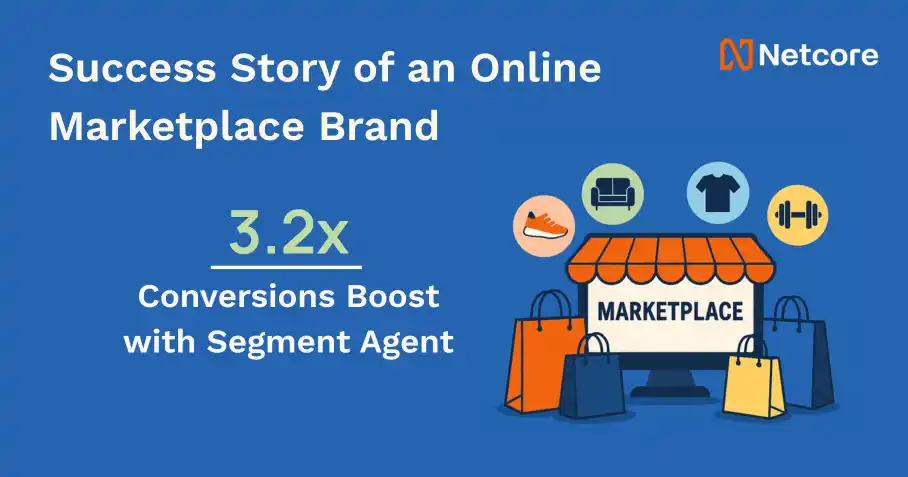
The Challenge
Despite healthy traffic, the online marketplace brand was struggling with:
- Low cart-to-checkout conversion rates
- High bounce rates on product pages
- One-size-fits-all campaigns that performed well on paper, but delivered inconsistent revenue
- Disconnected segments built manually across different product teams
- And no visibility into which customers were most likely to buy what, and when
The problem wasn’t just creative. It was strategy.
The Turning Point: Rethinking Segmentation for Growth
The marketing leadership realized their campaigns were failing not because of what they said, but because of who they were targeted to.
That’s when they brought in Netcore’s Segment Agent.
This wasn’t about adding another analytics tool. This was about turning segmentation into their growth engine.
Strategy Teardown: What They Did and How They Did It
1. Redefined Audience Strategy with Affinity-Based Targeting
Before: Campaigns were based on static categories like “electronics shoppers” or “deal seekers.”
After: Using Segment Agent’s Affinity Segments, they identified micro-cohorts like:
- Customers who love premium gadgets at full price
- Price-sensitive buyers who only shop during seasonal deals
- High-frequency shoppers in the beauty & hygiene category
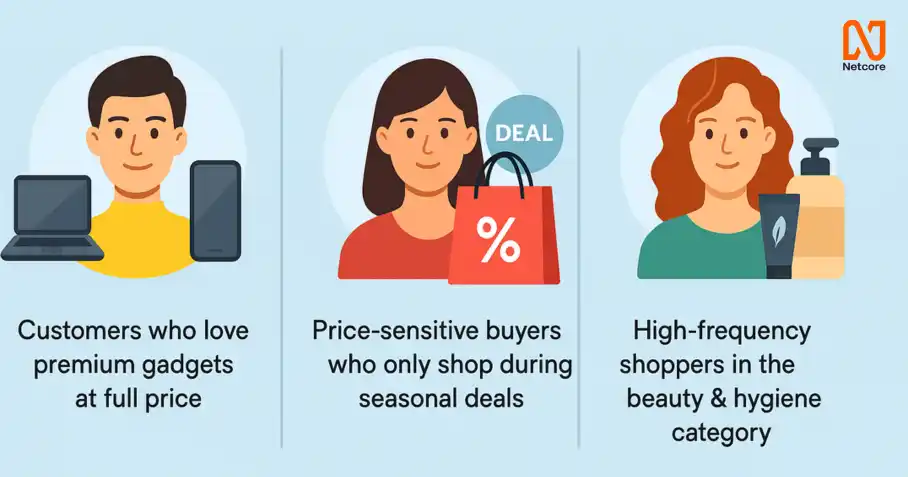
Result: They sent personalized push notifications and in-app banners tailored to these affinities. CTRs improved by 65%, and purchase intent spiked across top segments.
2. Predicted Purchase Intent With Propensity Targeting
Before: They’d hit everyone with a cart reminder. Or worse, send reactivation campaigns to users who’d already churned months ago.
After: With Propensity Models, they could now predict:
- Who is most likely to purchase in the next 7 days?
- Who might uninstall or churn?
- Who’s warming up for a second or third purchase?
Result: They reallocated 30% of their retargeting budget to only “high intent” audiences and doubled their repurchase rates in beauty and small electronics.
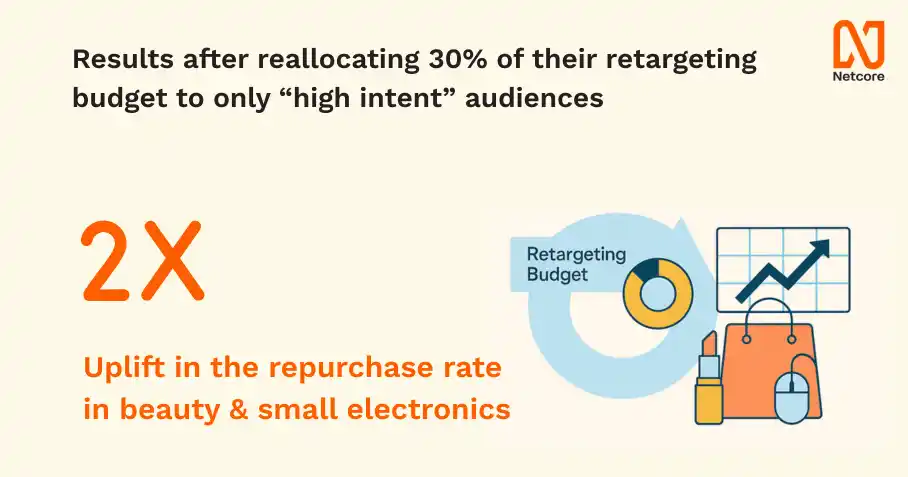
3. Used Objective-Driven Micro-Segmentation to Personalize Campaigns by Category
Instead of running broad campaigns, online marketplace brand’s teams used Objective-Driven Segments to:
- Target “about-to-churn” users with loyalty boosters
- Push category-specific bundles to “deal lovers” with high discount affinity
- Reactivate dormant users with products based on their past behavior
Result: The health & wellness team achieved a 3.2x increase in conversions for their seasonal detox collection just by matching offers to price and brand affinities.
4. Unified Cross-Channel Execution with Auto-Suggest Segments
Each product team was previously building audiences in silos. Segment Agent’s Auto-Suggest feature provided data-driven recommendations that anyone could use, such as:
- Shoppers who added but didn’t buy in the last 10 days + prefer COD
- High click-through email readers who haven’t purchased in 45 days
- High AOV users with strong brand loyalty in ‘Home Essentials’
Result: Email CTR improved by 88%, and cart abandonment nudges on WhatsApp drove a 14% lift in recoveries.
5. Enabled Real-Time Optimization with Performance-Linked Feedback Loops
Most campaigns were previously “set-and-forget.” But with continuous performance insights, Segment Agent helped:
- Refine high-performing segments in real time
- Eliminate low-engagement groups automatically
- Push feedback from conversion data to improve future campaign segmentation
Result: Within a quarter, the online marketplace brand cut campaign waste by 36% and grew revenue per email by 2.4x.
Why It Worked
- It wasn’t guesswork. Segments were built on actual behavior, preferences, and predicted actions—not gut feeling.
- It evolved. Segments are updated in real-time as behavior changes, keeping campaigns fresh and relevant.
- It scaled. The marketing team didn’t need data scientists. Segment Agent’s marketer-friendly interface and recommendations enabled agility.
- It unified. Whether email, push, or on-site banners, all campaigns worked off the same audience intelligence.
Final Thought: The Difference Between Personalization and Performance
The online marketplace brand didn’t change what they were selling. They changed who they were selling to, when, and how—based on deep audience intelligence.
Segment Agent didn’t just power segmentation. It powered strategy.
That’s the future of ecommerce growth—campaigns that speak to one but convert at scale.
Ready to Turn Segmentation into Scalable Revenue?
When segmentation is treated like a checkbox, you’re just blasting messages into the void. But when it becomes the core engine of your ecommerce marketing, the payoff is measurable:
- Up to 3x increase in conversion rates
- 20–40% boost in customer lifetime value (CLTV)
- 30–50% reduction in wasted campaign spend
Segment Agent makes all of this effortless with the power of AI.
No data science degree is needed. No complex integrations. Just a powerful, intuitive tool your team can start using from Day One—with built-in intelligence, real-time updates, and strategic recommendations tailored to your business.
Don’t wait to start seeing results.
Every day without predictive segmentation is a day you’re losing potential revenue and burning budget on generic campaigns.







